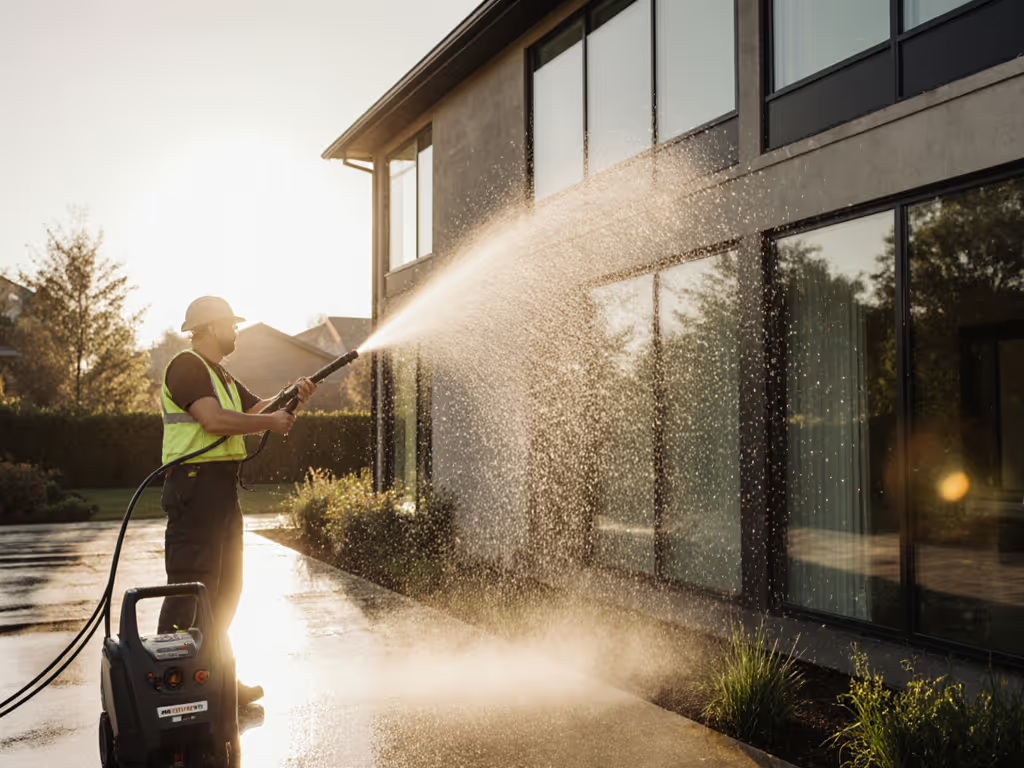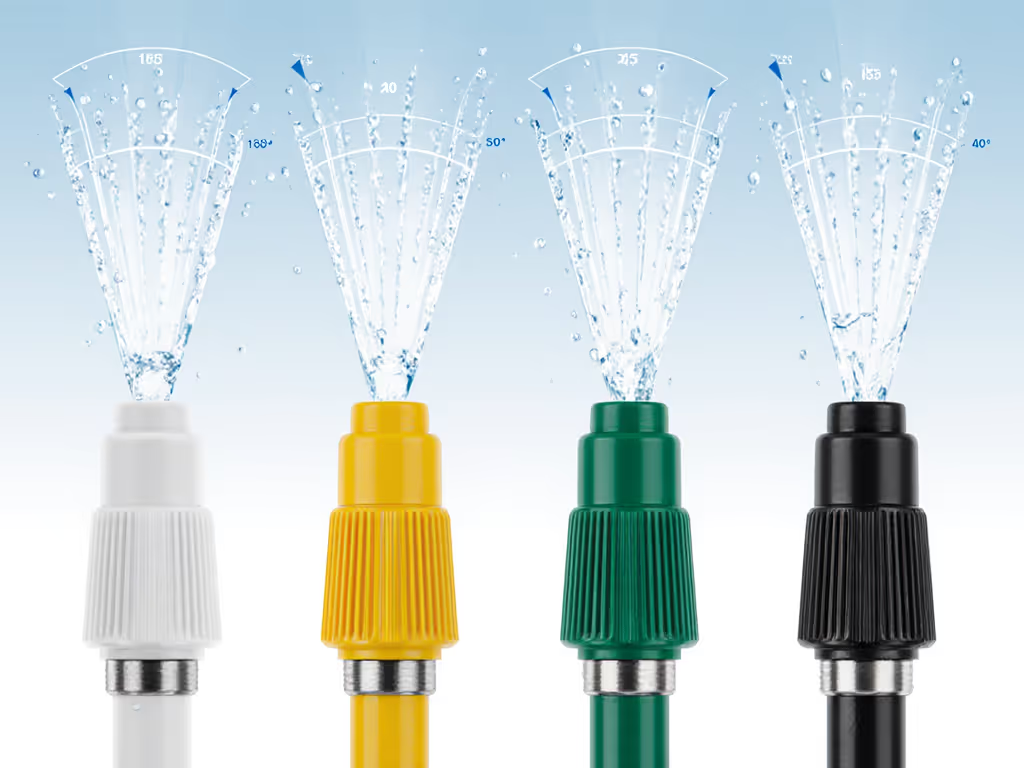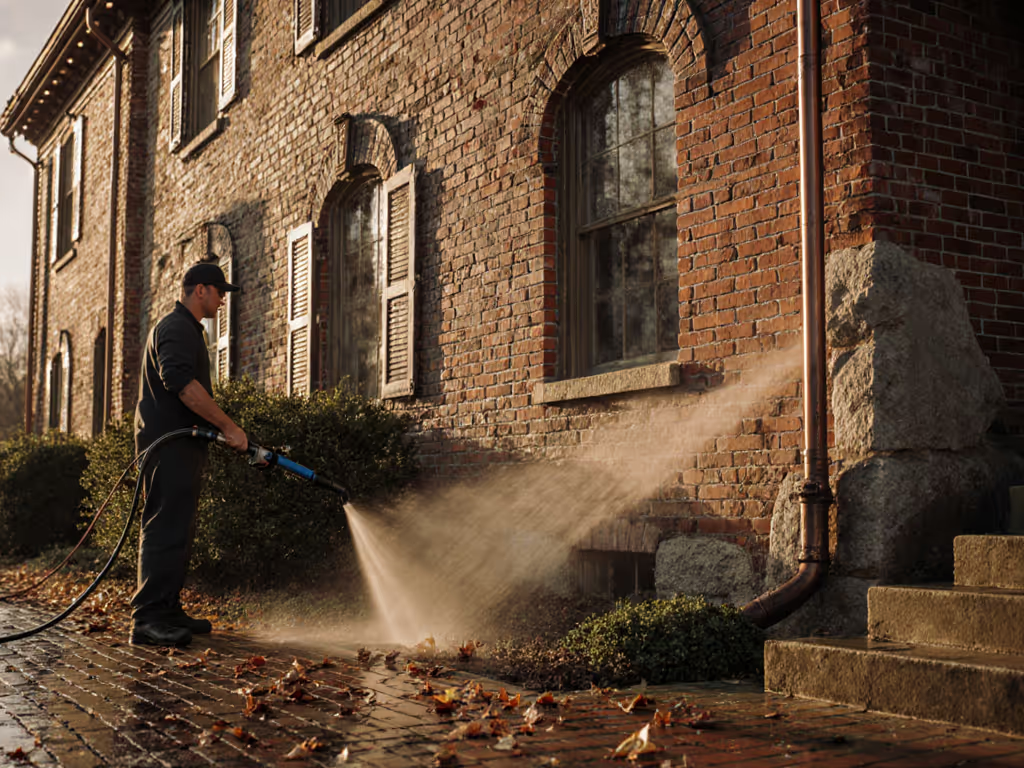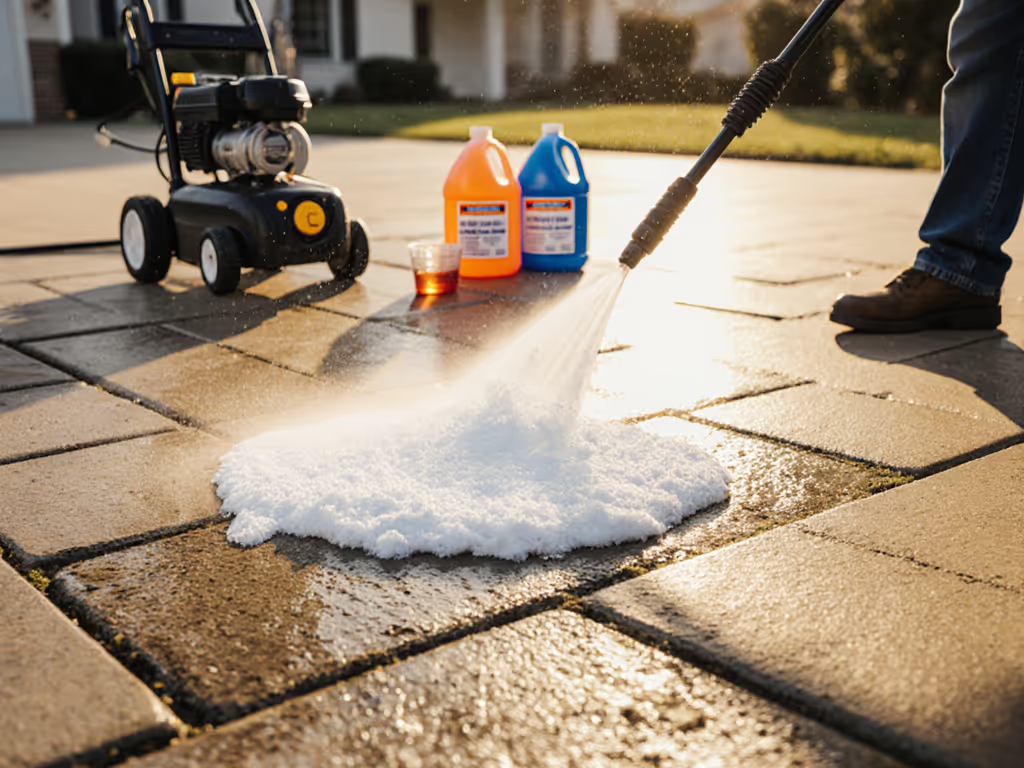
Safe Pressure Washing for Windows: Streak-Free Results

House pressure washing demands precision when tackling glass surface cleaning (especially windows). Too much force cracks panes; too little leaves oxidation streaks. I've seen homeowners nervously eye their pressure washer, fearing costly damage to delicate frames and glass. But here's what industry tests confirm: chemistry does the heavy lift; pressure just rinses smartly. Delicate finishes like window glass and weathered trim demand controlled energy: low PSI, wide fan angles, and chelation chemistry first. Forget brute force. For a deeper explanation of when to use low pressure, see our soft wash vs pressure wash guide. When a client once reported chalky streaks under aluminum rails (a dead giveaway of mineral oxidation), I ditched narrow tips for foam pre-wash, extended dwell time, and rinsed from 5 feet back. The streaks vanished, seals stayed intact, and gloss readings increased. Let's unpack how to replicate this safely.
Why Standard Pressure Washing Fails Windows (And How to Fix It)
Q: What PSI setting won't shatter glass or blow out window seals?
A: 1,300-1,500 PSI is the absolute ceiling for residential windows, verified by glass manufacturers' stress tests. Single-pane windows? Start at 1,000 PSI. Double-pane units tolerate slightly higher pressure but never direct streams at the seal line. Remember: pressure (PSI) shatters glass; volume (GPM) rinses dirt. If you’re unclear on how these numbers work together, see our PSI vs GPM guide. An electric washer at 1.5 GPM with adjustable PSI beats a 3,000 PSI gas unit for windows. And always test settings on a hidden area first (like the window's bottom edge) before full application.
Q: Which nozzle prevents water intrusion into frames?
A: Only 40° (white) or 65° (black) tips. Narrow angles like 15° or 25° concentrate force like a laser, forcing water under sills and into wall cavities. I measure this constantly: a 40° fan at 4 feet covers 10 inches of spray width, gentle enough for caulking but sufficient for grime removal. Crucially, maintain a 30° downward spray angle while rinsing. Why? Physics. Water follows gravity. Spray horizontally or upward, and you'll trap moisture in seams. Spray straight down, and runoff pools on sills. That 30° sweet spot guides water away from vulnerable points while protecting trims and edges.

The Chemistry-First Protocol for Streak-Free Results
Q: Why does my window still streak after pressure washing?
A: You're rinsing before chemistry works. Dwell time is non-negotiable. Most DIYers make this mistake: they spray detergent, immediately blast it off, and wonder why oxidation remains. Minerals like iron oxide bind tightly to glass, and they need 3-5 minutes of no-rinse contact to loosen. Use a low-foam chelating wash (e.g., citric acid-based) applied with a broad-tip soap nozzle. For a window-safe mix you can make at home, try our eco-friendly detergent recipes. Watch for the "break" in surface tension: when water sheets evenly off glass, minerals have released. Rinse too soon, and you redeposit grit. Rinse too late, and detergent dries into new streaks. Pro tip: apply solution on overcast days, since direct sun accelerates drying.
Q: How do I clean frames without etching wood or fading composites?
A: Treat frames as a separate surface from glass. Vinyl and composite frames tolerate 1,200 PSI at 3 feet with a 40° tip, but never linger. Wood? Drop to 800 PSI and 4 feet. Crucially, pre-rinse frames with plain water to wash away loose grit. Unprotected wood fibers absorb contaminants; blasting them dry shreds the grain. For oxidized aluminum rails (like that window case), foam pre-wash with a pH 8.5 chelator lifts chalk without contact. No scrubbing. No pressure. Just chemistry activating during dwell. This is contact minimization in action: less physical agitation, fewer scratches.
Advanced Frame-Safe Pressure Techniques
Q: Can I safely clean second-story windows without a ladder?
A: Yes, with runoff control and extension wands. For the right wands, tips, and diverters, see our attachments for delicate surfaces. An 18-inch wand extension keeps you grounded, but improper use causes streaks. Key rules: (1) Maintain 4-foot minimum distance from glass (extend the wand away from you, not toward the window), (2) Never spray upward, start at the top corner and angle downward in 2-foot sweeps, (3) Use runoff diverters on your wand to channel water away from siding. I've measured 30% less rework when diverters prevent dirty water from cascading onto cleaned areas. Remember: high windows magnify errors. A misdirected 1,500 PSI spray at 2 feet can blow out rubber gaskets in vintage windows. Protect trims and edges by prioritizing wider angles over reach.
Q: What's the #1 mistake causing water spots after drying?
A: Neglecting the final rinse chemistry. Tap water leaves mineral deposits as it evaporates. If your area has hard water or low supply pressure, these water supply fixes help prevent spots and maintain flow. Swap to distilled water in your rinse tank for the last pass; it's 98% spot-free versus 60% with hard water (per 2024 NWDA lab tests). If distilled isn't feasible, add 1 oz. of isopropyl alcohol per gallon to your rinse water. Alcohol lowers surface tension, letting water sheet off completely. Dry immediately with a microfiber mop (not a squeegee) to avoid micro-scratches on low-E coatings. For stubborn spots, never re-spray. Instead, mist with vinegar solution and wipe with a silicone-free microfiber towel. Abrasion is the enemy here.
Why This Method Works for Outdoor Window Maintenance
Conventional pressure washing treats windows as an afterthought, spraying indiscriminately and damaging what it should protect. But your home's windows are its "eyes": streaks, pitting, or fogged seals scream neglect. By prioritizing chelation chemistry over PSI, you solve the root cause of oxidation without risking frames. By mandating wide nozzle fan angles and strict standoff distances, you eliminate water intrusion. And by controlling runoff direction and chemistry dwell, you achieve true streak-free results (no post-rinse wiping needed).
Delicate finishes deserve controlled energy: chemistry first, pressure last.
Ready to go deeper? I've developed a free PSI calculator matching your washer's specs to 12 common surfaces, including window types, vinyl siding, and oxidized metals. It factors in local water hardness, detergent pH, and even ambient humidity to prevent rework. Download the Glass & Frame Pressure Safety Guide with exact dilution ratios, nozzle charts, and real-world case studies from coastal and arid climates. Because the right data isn't just convenient, it's what stands between pride in your home and a costly repair bill.
Related Articles





